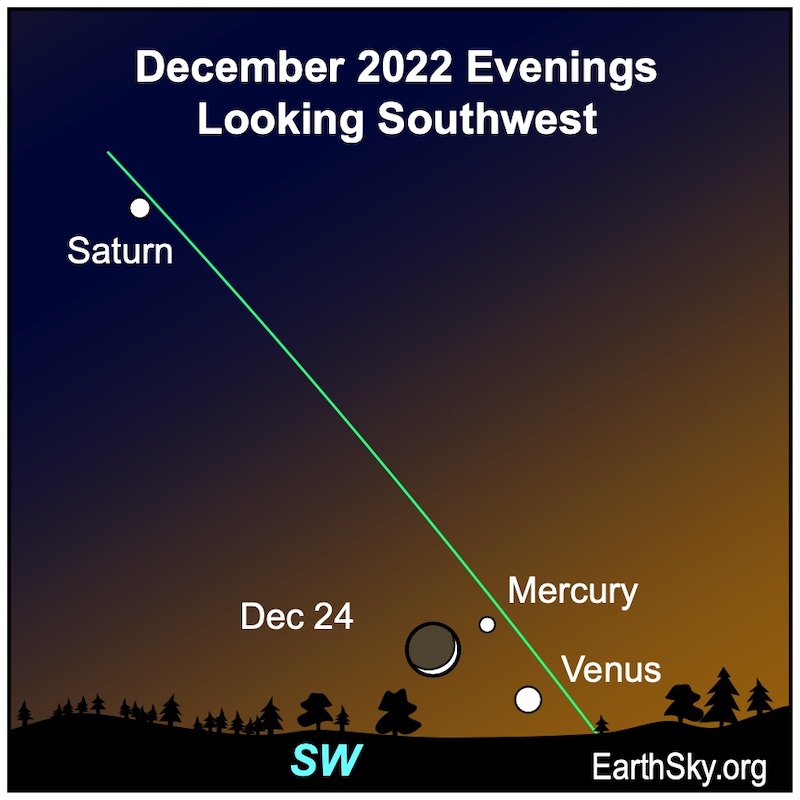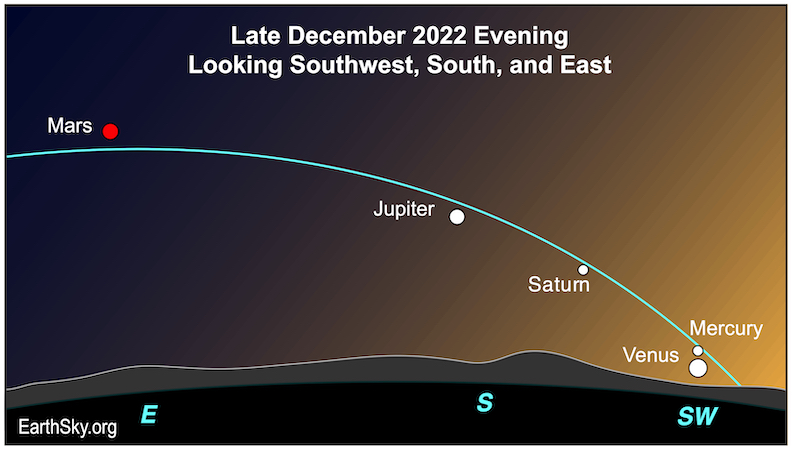
Our charts are mostly set for the northern half of Earth. To see a precise view from your location, try Stellarium Online.
The moon near Mercury and Venus December 24
Venus – the 2nd planet outward from the sun – is the brightest planet. And it dominated the morning sky for much of 2022. Then, in September 2022, we lost Venus in the early morning twilight, as it moved into position to pass behind the sun from Earth. Mercury is the innermost planet. It comes and goes rapidly in our sky. Mercury disappeared in the morning twilight in early November, after its best morning apparition for Northern Hemisphere viewers. Now, you can see the two inner planets in the evening twilight. The view is best about 30 to 40 minutes after sunset. But if you haven’t found Mercury or Venus yet, let the waxing crescent moon be your guide to the two planets on this Christmas Eve. Go outside shortly after sunset on December 24, 2022. Look in the sunset direction. Mercury and Venus will be near the sunset glare, and near the moon.
In fact, the moon, Venus and Mercury will form a nice triangle in the sky as it begins to darken. The orientation of the three objects with respect to the horizon will shift, depending on where you are on Earth. Use Stellarium for an exact view from your location.
Also notice that the very thin moon will be glowing with lovely earthshine. It sounds like a great photo op to me.
The moon and five bright planets
But wait, there’s more! After enjoying the view of the moon, Venus and Mercury, look for Saturn, Jupiter and Mars. Seeing the moon plus all five bright planets is a special treat.
First, you’ll need a clear view from the southwestern horizon through the eastern sky. Then, look higher in the sky for a creamy, steady light. That’s the planet Saturn. Next, look south to find the brightest “star” in that area of the sky, which is the planet Jupiter. Finally, look east, where you can see brilliant Mars forming a triangle with the star clusters Pleiades and Hyades.

Bottom line: No matter where you live worldwide, let the thin crescent moon be your guide to Mercury and dazzling Venus on the evening of December 24, 2022.
For more great observing events in the coming weeks, visit EarthSky’s night sky guide











